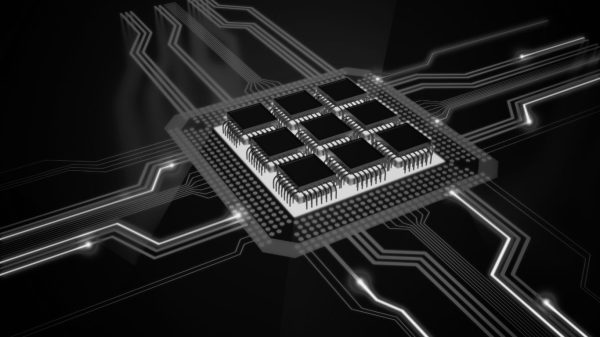In today’s rapidly evolving digital era, higher education institutions are under immense pressure to provide quality education while delivering cutting-edge technological experiences. As college campuses become increasingly connected and reliant on technology, comprehensive IT support and modernized infrastructure are essential components of an institution’s success. This article explores how a robust IT infrastructure upgrade in colleges can elevate educational delivery, enhance campus security, and drive innovation.
Introduction
Modern educational institutions face the dual challenge of maintaining academic excellence while integrating innovative technologies to support learning and administration. Colleges are turning to comprehensive IT support to bridge the gap between traditional educational models and the demands of the digital age. This transformation—often referred to as college IT modernization—involves planning new IT infrastructure, budgeting for hardware/software upgrades, and implementing phased strategies to ensure seamless transitions without disrupting academic operations.
A successful IT infrastructure upgrade in colleges does not only modernize hardware and software—it creates an environment where students and staff can leverage advanced digital tools for enhanced collaboration, learning, and administrative efficiency. This blog delves into the key aspects of IT infrastructure upgrades in colleges, examining the planning, budgeting, implementation, and long-term benefits associated with a comprehensive IT strategy.
Get Our FREE Digital Transformation Checklist
The Need for IT Infrastructure Upgrades in Higher Education
Changing Dynamics in Education
Higher education has evolved beyond the traditional classroom model. With the rise of e-learning, virtual classrooms, and remote administration, institutions are required to integrate innovative technologies that support a diverse range of academic and administrative functions. The growing reliance on digital resources necessitates a strong and agile IT backbone. An IT infrastructure upgrade in colleges ensures that systems are reliable, secure, and scalable to meet future demands.
Enhancing Educational Delivery
Modern IT systems empower educators and students with interactive learning platforms, real-time communication tools, and access to vast repositories of online resources. Enhanced IT support leads to improved classroom engagement and administrative efficiency, driving a better educational experience overall. Robust IT infrastructure supports:
- Interactive Learning: Utilizing multimedia content, virtual labs, and collaborative platforms to enrich the learning experience.
- Remote Learning Capabilities: Providing seamless access to learning materials and virtual classes, which is especially crucial during times of crisis.
- Efficient Administration: Streamlining processes such as enrollment, grading, and resource management through integrated software solutions.
Addressing Security and Compliance
Colleges manage a wealth of sensitive data—from student records to research data—and therefore require top-notch security measures. A modern IT infrastructure, backed by comprehensive support, is crucial in ensuring data integrity, regulatory compliance, and protection against cyber threats.
The Role of Comprehensive IT Support in College IT Modernization
Integration of Modern Technologies

Comprehensive IT support encompasses the integration of modern technologies such as cloud computing, virtualization, and advanced cybersecurity measures. These components are integral to college IT modernization, enabling institutions to maintain high performance and secure operations. With cloud services, for example, colleges can offer scalable storage solutions and access computing resources on demand, reducing the need for heavy capital investments in physical hardware.
Proactive Maintenance and Upgrades
One of the significant benefits of having dedicated IT support is the shift from reactive to proactive maintenance. By implementing monitoring tools and scheduled maintenance routines, IT departments can identify potential issues and address them before they escalate. This proactive approach minimizes downtime and ensures that educational services remain uninterrupted.
Customization and Scalability
Every educational institution has unique needs. Comprehensive IT support provides customizable solutions tailored to the specific requirements of each college. Whether it’s upgrading network infrastructure or deploying new learning management systems, IT professionals work to ensure that solutions are scalable and adaptable as the institution grows. This level of customization is essential in making sure that every investment in an IT infrastructure upgrade in colleges results in tangible improvements in performance and user experience.
Planning New IT Infrastructure
Assessing Current Infrastructure
Before initiating any IT upgrade, it is essential to conduct a thorough assessment of the existing IT infrastructure. This assessment involves:
- Network Analysis: Evaluating the current network architecture to determine its capacity, speed, and reliability.
- Hardware Inventory: Listing existing hardware components and assessing their age, performance, and upgrade potential.
- Software Utilization: Reviewing software systems to identify outdated applications and compatibility issues.
- Security Review: Conducting audits to pinpoint vulnerabilities and assess compliance with current cybersecurity standards.
Setting Clear Objectives
An effective IT upgrade requires clear, measurable objectives that align with the institution’s strategic goals. These objectives might include increasing network bandwidth, improving data security, and providing seamless integration with modern educational technologies. Setting these goals not only guides the planning process but also establishes benchmarks for future evaluations.
Developing a Roadmap
Once the objectives are set, the next step is to develop a detailed roadmap that outlines the entire upgrade process. This roadmap should cover the timeline, budget, resource allocation, and risk management strategies. It defines when each phase of the upgrade will be implemented, how costs are managed, and what contingency plans are in place to mitigate potential disruptions.
Engaging Stakeholders
Successful IT infrastructure upgrades depend on the active involvement of key stakeholders. This includes IT staff, administrative personnel, faculty members, and even student representatives. Regular consultations and feedback sessions help ensure that the upgrade meets the practical needs of all users while minimizing disruptions to daily operations.
Get Our FREE Digital Transformation Checklist
Budgeting for Hardware/Software Upgrades
Understanding the Financial Landscape
Budgeting is a critical aspect of any IT infrastructure upgrade in colleges. Financial constraints often pose significant challenges, making it essential to plan meticulously. Institutions need to identify funding sources, prioritize investments, and plan for future upgrades. Funding can come from institutional budgets, government grants, or private partnerships, and investments should focus on high-impact areas to ensure that critical components receive the necessary funding.
Cost-Benefit Analysis
Conducting a comprehensive cost-benefit analysis helps in making informed decisions about hardware and software investments. This analysis involves evaluating the long-term benefits of modernized infrastructure—improved performance, enhanced security, and increased operational efficiency—against the initial investment costs. Key cost areas include:
- Hardware Upgrades: New servers, networking equipment, and computing devices that support increased capacity and speed.
- Software Licenses: Investment in updated software platforms, learning management systems, and security applications.
- Training and Support: Costs associated with training staff and faculty to effectively use new technologies.
- Maintenance Contracts: Ongoing expenses for technical support and regular maintenance services.
Strategies for Effective Budgeting
To manage costs effectively while planning IT upgrades in education, consider these strategies:
- Phased Investment: Spread the investment over multiple phases to avoid large upfront costs. This approach also allows for adjustments based on initial feedback.
- Leverage Cloud Solutions: Cloud-based services often offer flexible payment plans and reduce the need for extensive physical hardware investments.
- Vendor Negotiations: Engage in negotiations with vendors for competitive pricing, bundled packages, and long-term support contracts.
- Return on Investment (ROI) Projections: Develop clear ROI projections to justify investments to decision-makers. Highlight benefits such as improved operational efficiency, reduced downtime, and enhanced user satisfaction.
Phased Implementation Strategy
Pilot Programs and Testing
A phased implementation strategy minimizes risk and ensures a smooth transition from old to new systems. Beginning with pilot programs in selected departments or facilities allows IT teams to test the new systems in a controlled environment. These pilots help identify unforeseen issues and enable refinement of strategies before a full-scale rollout.
Gradual Rollout
After successful pilot testing, plan a gradual rollout across the campus. A staggered approach minimizes disruption to academic activities and allows for continuous monitoring and troubleshooting. Key phases of implementation may include initial deployment, gathering feedback for adjustments, and a campus-wide rollout followed by a post-implementation review.
Training and Change Management
A critical component of phased implementation is effective change management. All stakeholders must be well-informed about the changes and provided with adequate training. Training should cover system navigation, updated security protocols, and the use of new support channels. Comprehensive training programs and reliable support channels are vital for smooth adoption of new technologies.
Impact on Educational Delivery
Improved Learning Environments
A comprehensive IT infrastructure upgrade transforms traditional classrooms into dynamic learning environments. Enhanced connectivity and digital resources empower educators to deliver engaging, multimedia-rich lectures. Modern classrooms equipped with smart boards, high-speed internet, and interactive software can adapt quickly to various teaching styles and learning modalities. Key benefits include enhanced collaboration through digital platforms, global access to online libraries and research databases, and personalized learning through adaptive technologies.
Streamlined Administrative Processes
Modern IT systems streamline administrative tasks, making operations more efficient. Integrated systems for enrollment, student management, and communication reduce paperwork and administrative overhead. This not only frees up valuable resources but also enhances the overall student experience by providing seamless, user-friendly services.
Enhanced Campus Security
Security is a paramount concern for any educational institution. With a modern IT infrastructure, colleges can deploy advanced cybersecurity measures to protect sensitive data and ensure regulatory compliance. Upgraded systems allow for real-time threat monitoring, rapid incident response, and robust data encryption practices. As cyber threats become increasingly sophisticated, having a secure and updated IT environment is essential for safeguarding both institutional and personal data.
Enabling Research and Innovation
Modern IT systems not only support day-to-day operations but also foster research and innovation. Researchers benefit from high-performance computing resources, secure data storage, and collaborative tools that enable cross-disciplinary projects. By investing in IT infrastructure upgrades in colleges, institutions position themselves as leaders in technological innovation, attracting top talent and research funding.
Future Trends in College IT Modernization
Integration of Artificial Intelligence (AI)
As technology continues to evolve, AI is set to play an increasingly pivotal role in higher education. AI-driven analytics can help institutions predict maintenance needs, optimize resource allocation, and personalize learning experiences for students. Future IT infrastructure upgrades may incorporate AI-powered tools to further enhance campus operations.
Expansion of the Internet of Things (IoT)
The Internet of Things is already transforming various industries, and its influence in higher education is growing. Connected devices such as smart sensors, interactive displays, and IoT-enabled security systems create more efficient, responsive campus environments. These innovations not only improve operational efficiency but also contribute to a more connected and sustainable campus ecosystem.
Emphasis on Cybersecurity
With the rise of digital transformation comes an increased focus on cybersecurity. Future IT upgrades in colleges will likely involve even more robust security measures, including biometric authentication, blockchain-based record keeping, and advanced threat detection systems. Institutions must stay ahead of emerging security trends to protect both data and reputation.
Virtual and Augmented Reality (VR/AR)
The integration of VR and AR in education is poised to revolutionize teaching and learning experiences. These technologies offer immersive learning environments where students can engage with complex concepts in a hands-on manner. As colleges modernize their IT infrastructure, incorporating VR/AR tools could become a cornerstone of innovative educational strategies.
Key Strategies for Planning IT Upgrades in Education
For institutions looking to modernize their IT infrastructure and achieve college IT modernization, here are some actionable strategies:
- Conduct a Comprehensive IT Audit: Evaluate current systems, identify weaknesses, and outline key areas that need improvement. This audit should cover hardware, software, network capabilities, and security protocols.
- Engage in Collaborative Planning: Involve stakeholders from various departments to ensure that the upgrade meets the practical needs of both academic and administrative users. Regular meetings and feedback loops are crucial for successful planning.
- Develop a Realistic Budget: Plan financially by conducting a detailed cost-benefit analysis and exploring diverse funding sources. Consider phased investments to spread out costs and reduce immediate financial burdens.
- Prioritize Cybersecurity: Ensure that any new IT system integrates advanced security measures. This should include regular updates, cybersecurity training for staff, and investments in the latest threat detection technologies.
- Embrace Scalable Solutions: Choose technologies that are not only state-of-the-art but also scalable. This ensures that the IT infrastructure can grow with the institution’s needs without requiring frequent overhauls.
- Implement Phased Rollouts: Avoid overwhelming the institution by deploying new systems in phases. Begin with pilot programs, gather user feedback, and then expand gradually campus-wide.
- Invest in Training and Support: Ensure that faculty, staff, and students are well-trained on new systems. Comprehensive training programs and reliable support channels are vital for the smooth adoption of new technologies.
Challenges and Considerations in College IT Modernization
While the benefits of an IT infrastructure upgrade are manifold, institutions must also consider potential challenges. Many colleges operate under strict financial limitations, making it essential to balance the need for modern technology with available funding through creative budgeting and prioritization. Additionally, transitioning to new systems often meets resistance from staff and faculty accustomed to legacy systems. Effective change management and comprehensive training are essential to overcome this hurdle. The technical complexity of integrating diverse systems can also pose challenges, requiring detailed planning and expert execution. Lastly, IT upgrades are not a one-time fix—they require continuous monitoring, maintenance, and updates, making ongoing support a critical aspect of long-term success.
The Long-Term Impact of IT Infrastructure Upgrades on Educational Delivery
A well-executed IT infrastructure upgrade can have a profound long-term impact on academic excellence. Modernized campuses foster environments where both educators and students can thrive. Enhanced connectivity, real-time access to information, and interactive learning tools contribute to better academic performance and higher student satisfaction rates. Investing in modern IT solutions also prepares colleges for unforeseen challenges such as shifts to remote learning or emerging cybersecurity threats, ensuring that educational delivery remains consistent even in times of disruption.
In today’s competitive educational landscape, institutions that invest in technology gain a significant advantage. Modern IT systems not only improve current operations but also attract prospective students, faculty, and research opportunities. A reputation for technological excellence can serve as a key differentiator in an increasingly digital world.
Get Our FREE Digital Transformation Checklist
Conclusion
Comprehensive IT support and strategic IT infrastructure upgrades are no longer optional for educational institutions—they are imperative. By focusing on college IT modernization and planning IT upgrades in education meticulously, colleges can create a future-ready environment that enhances both academic and administrative functions. The integration of modern technologies—from cloud computing to advanced cybersecurity—empowers campuses to provide superior learning experiences while ensuring operational efficiency.
Effective upgrades involve a multi-step process: assessing current systems, setting clear objectives, budgeting wisely, implementing phased rollouts, and investing in ongoing support and training. This holistic approach not only addresses immediate technological needs but also builds a robust framework for sustainable growth and innovation.
As colleges face the dual challenges of evolving educational demands and rapidly advancing technology, comprehensive IT support becomes increasingly critical. With strategic planning and continuous improvement, institutions can harness modern IT infrastructure to drive academic excellence, secure sensitive data, and build campuses that are truly future-ready.
Net Covet is dedicated to delivering cutting-edge IT consulting and security solutions. Our expertise in IT infrastructure upgrades and comprehensive IT support empowers educational institutions to embrace modernization and drive sustainable success. Whether planning new IT infrastructure, budgeting for hardware/software upgrades, or implementing phased upgrade strategies, our tailored solutions ensure that your institution is equipped to meet the challenges of today and tomorrow.
By strategically investing in IT infrastructure and comprehensive IT support, colleges not only improve their immediate operational efficiency but also lay the foundation for a dynamic, secure, and innovative educational future. Embrace the transformative power of technology to lead the way in redefining the educational experience.










